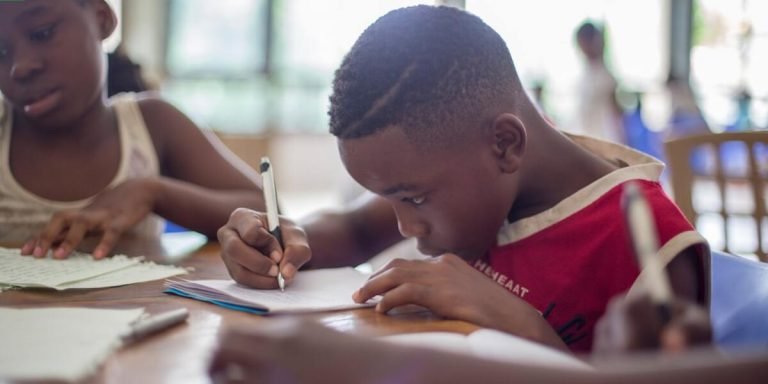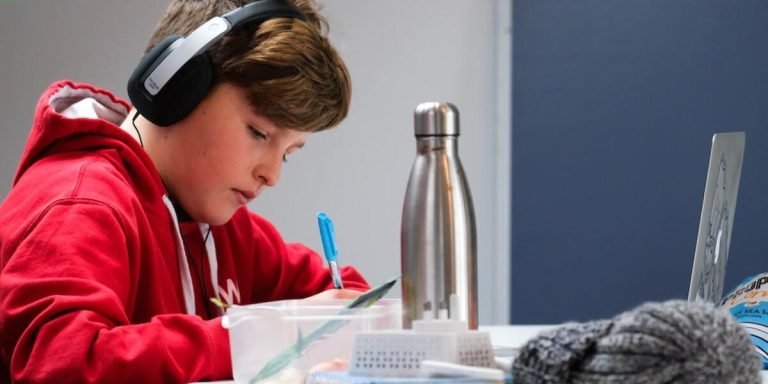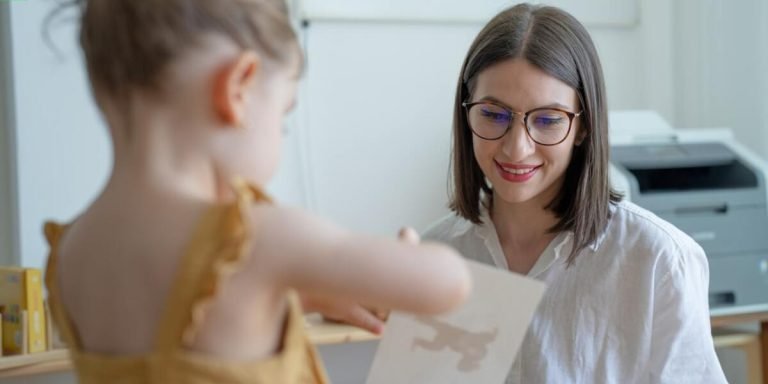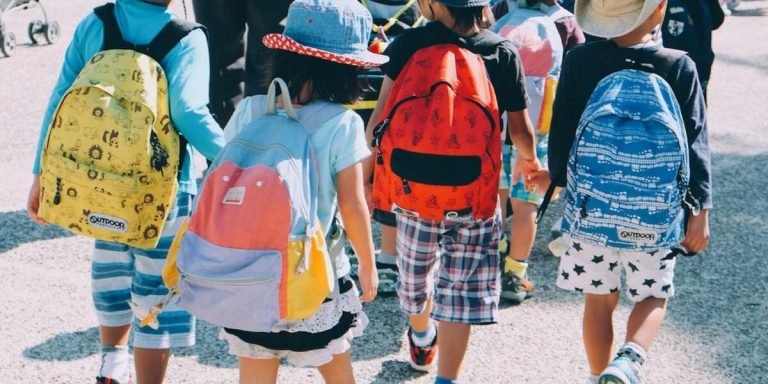Individual Learning Plan: A Pathway to Personalized Education Success
Every educator’s goal is to lay the groundwork for a holistic learning process. Central to this objective lies an essential tool known as an Individual Learning Plan (ILP). An ILP aims at introducing targeted, specialized strategies designed specifically according to individual student needs in education.
This strategic framework allows educators and parents alike, to gain insights into each child’s unique learning style while focusing on improving their strengths and addressing their areas of growth. With Special Education Resources and Support taking center stage, crafting an effective Individual Learning Plan often proves pivotal in achieving personalized educational success.
Did you know?
Did you know that implementing Individual Learning Plans can increase the graduation rate by up to 13 percent – according to a study done by America’s Promise Alliance?
Understanding Individual Learning Plans in Special Education
Embracing Individual Learning Plans (ILPs) in special education has become a pivotal educational strategy. These personalized plans are customized to cater to each individual student’s needs, considering their strengths and areas for improvement. With the dawn of technology, ILPs have been transformed beyond static documents into dynamic tools that adapt as students grow and learn.
In our technologically advanced era, technology integration in implementing these individual learning plans is more relevant than ever before. Educational technologies help educators design diverse strategies tailored specifically for children with unique requirements within inclusive classrooms or specialized institutions. Not only can they assess current skill levels accurately but also monitor progress throughout the year using data-driven insights.
Special education resources have emerged at an accelerated pace over recent years, providing support via software applications which facilitate designing powerful ILP’s based on thorough academic analyses and careful observations about children’s engagement levels during various tasks.
The supportive materials readily available assist educators in addressing multiple intelligences while ensuring all learners reach their fullest potential by tracking learners’ growth against set goals regularly.
Harnessing current tech trends positively impacts both teachers’ task facilitation capabilities and improves outcomes for students through effectively implemented Individual Learning Plan – changing lives one learner at a time.
By bridging the gap between capacity and capability through technological interventions embedded seamlessly within curricula could indeed revolutionize how we perceive special education today!
The Role of Individualized Education Programs (IEPs)
The role of Individualized Education Programs (IEPs) in boosting the effectiveness of individual learning plans cannot be overstated. In special education, it’s essential to provide a tailored approach as this enhances not just academic performance but also overall development.
Fundamentally, an IEP is essentially a blueprint for how schools will support students with disabilities and facilitate their educational growth. It serves as both a legal document outlining required accommodations or modifications and an assurance that these supports will be provided consistently in line with federal law requirements under Individuals with Disabilities Act 2004.
One key element contained within each student’s IEP is the individual learning plan – ILP. This aspect focuses explicitly on what learners need to do independently from teachers; mapping out tools they require promoting self-learning abilities while ensuring successful technology integration.
In today’s hyper-connected world where technology influences every facet of our lives, integrating it into special education resources has become inevitable. By effectively incorporating teaching tech-tools like interactive whiteboards, tablets equipped with specialized apps catering to different learning needs – children can engage more deeply improving knowledge retention rates thus making parents’ job easier too!
However, designing effective individual leaning plans using technological aids requires expert insights understanding child-specific capabilities adjusting inputs accordingly resulting better outcomes.
Components and Development of an Effective Individual Learning Plan
The development process initiates by conducting deep-rooted assessments which aids in recognizing areas where extra support may be required; ranging from academic subjects such as arithmetic or language skills to social interaction abilities. One can leverage technological advancements like AI-enabled assessment tools which provide precise data about a student’s current skill set.
Next on board comes defining realistic, achievable targets for students keeping their unique capabilities into account – another key component wherein technology proves its worth through advanced goal-tracking apps or softwares offering clear visibility towards progress made against specified objectives.
Developing strategic activities designed exclusively to help attain these defined targets come next in line that equip students with necessary skills while also making learning fun-filled! This could mean leveraging technologically rich resources like interactive eBooks tailored specifically according to ILPs, virtual reality experiences simulating real-world scenarios enhancing comprehension levels etc., precisely anything helping children learn better!
Lastly but importantly – Regular review sessions form an integral part aiding consistent monitoring & adjustment if need-be ensuring transparency amidst all stakeholders including educators and parents alike via tech-savvy platforms hosting reviews digitally bringing forth ease-in-accessibility blended well alongside efficiency.
Evaluating the Effectiveness of Special Education Resources
The effectiveness of special education resources can be evaluated on several fronts but none more significant than the individual learning plan. This customized educational roadmap, tailored to meet each child’s unique needs and potential, has been a prevailing tool in education for many years now. However, with technology integration becoming prevalent in 2023, it’s time we explore its profound impact on shaping these plans further.
Advancements in edtech are revolutionizing how educators develop and implement individual learning plans. Special Education Resources have become increasingly digitized enabling tactile accessibility while catering to varied learner styles – visual learners could benefit from graphic organizers apps whereas auditory learners might better assimilate through audiobooks or speech-to-text software; thereby providing multiple avenues for achieving set objectives.
A key feature that makes this combination stand out is real-time progress tracking which facilitates proactive adjustments instead of waiting until formal assessments indicate a need for change. By incorporating technology into their strategies, special educators wield an enhanced ability not only to pinpoint areas where students struggle but also identify ways they shine leading towards fulfilling every student’s inherent promise.
Assessing Resource Impact on Student Progress
In the realm of childhood education, especially when it comes to students requiring special resources and support, individual learning plans often play a pivotal role. These personalized educational approaches help educators treat each child as unique individuals with distinct needs.
The first step in assessing resource impact on student progress begins by gauging how well an individual learning plan is tailored according to a student’s requirements. Teachers need to ensure that these plans aren’t just fitting into the ‘standard’ schooling model but are customized adeptly for every student’s exclusive situation.
Next up is evaluating if technology integration in education—which has become increasingly significant—is suitable within this context or not. In 2023, we have at our disposal numerous advanced tools designed specifically for aiding children with distinctive needs. From interactive whiteboards enhancing visual perception abilities to assistive technology like audiobooks bolstering auditory skills—efficient use of such cutting-edge tech can lead towards substantial improvement in learner outcomes.
It doesn’t stop there; measuring engagement level forms another important aspect here too. Are learners finding the process exciting? Is their curiosity piqued through these methods?
The utilization of engaging apps and software could make all the difference!
Finally yet importantly, constant tracking and maintenance prove essential when dealing with any form of specialized instruction method—including individualized learning programs entwined with effective technological applications—ensuring they produce desirable results over time.
Strategies for Continuous Improvement in Resource Utilization
Continuous improvement in resource utilization is a critical aspect of providing efficient and effective special education. But to achieve this goal, educators need to employ data-driven strategies that evaluate the use, impact, and value of resources over time.
One method revolves around monitoring the Individual Learning Plan (ILP). The ILP lays out practical steps for every student’s journey in education based on their unique needs. Being consistent with tracking progress according to these plans can provide valuable insights into which resources are proving most beneficial or underutilized.
In 2023, technology has become an integral part of educational frameworks within classrooms across the globe. By integrating tech-based tools like learning analytics systems into regular assessment processes – we not only ensure our children aren’t left behind but also equip them with vital skills needed for a digitized future.
Furthermore, two-way communication channels between parents/educators should be established via digital platforms such as email updates or parent-teacher apps; thereby fostering dialogue about how best each child can utilize available special education resources at school and home alike!
Enhancing Parental Involvement in Special Needs Education
As we march forward in 2023, the importance of parental involvement cannot be overstated in special needs education. The journey to tailor effective individual learning plans for children with unique educational requirements can bring an array of challenges and rewards alike. It requires consistent efforts from educators, therapists, and most importantly parents who have a vital role to play.
Embracing technology integration enriches this process immensely by improving communication between key stakeholders involved in shaping these individual learning plans – teachers and parents especially. Through technological tools such as video conferencing apps or instant messaging platforms on mobile devices it’s now easier than ever before for educators to engage meaningfully with busy professionals juggling diverse roles at work while managing their child’s development goals simultaneously.
Technology has revolutionized access to resources for special education support, now readily available online. These resources include:
- Exclusive reading materials tailored for children with special needs, covering disorders such as Autism Spectrum Disorder (ASD) and Attention Deficit Hyperactivity Disorder (ADHD).
- Home-based activity suggestions designed under expert guidance to aid skill development.
Parents can click away to find these resources today, which empower them to ensure optimal growth opportunities for their child regardless of their global location.
Communication Strategies Between Educators and Parents for Optimal Support
The success of an individual learning plan for a child with special needs heavily relies on the robust involvement and open communication between parents and educators. Here, we discuss some effective strategies that can help foster this vital link.
Ensuring regular updates are communicated to parents regarding their child’s progress is crucial in establishing trust. This doesn’t have to be formal meetings always; quick emails or messages updating them about what was accomplished during school hours can work just as effectively.
Thanks to technology integration in education, using digital tools specifically designed for teacher-parent interactions has become smoother than ever before in 2023. Such platforms not only simplify communication but also allow sharing resources related to the individual learning plan seamlessly.
Host periodic virtual meetings with parents where you review the child’s development report together, discussing accomplishments and areas needing attention—Look at these sessions as problem-solving forums rather than routine updates alone.
There are numerous online resources available now dedicated specifically towards supporting children with unique educational requirements – apps focusing on skill-building games, academic websites offering adjustable lesson plans among others– These could prove invaluable both within classroom settings and continued learning support at home by integrating elements from such sources into your shared teaching approach helps ensure consistent use thereby maximizing benefits.
Training Sessions and Workshops to Empower Parents with Relevant Knowledge
Understanding the individual learning plan (ILP) of a child with special needs is vital for parents. But, without adequate knowledge or resources, it might seem overwhelming. That’s where training sessions and workshops play an important role in enhancing parental involvement.
Training sessions give parents first-hand exposure to several aspects related to their child’s education including technology integration. These workshops help them understand how modern technological tools can tailor-make their kid’s academic journey more effective and personalized in 2023.
Workshops provide a platform for sharing experiences and concerns among like-minded parents who face similar challenges every day. This not only helps improve confidence but also offers potential solutions that could be implemented at home or school settings.
For instance, assistive technologies such as speech-to-text applications can hugely benefit children struggling with written assignments due to dysgraphia -a condition affecting writing abilities-. Parents learn about these possibilities through interactive discussions during these gatherings; thus making the term “individual learning plan” less intimidating than before.
To further enhance understanding, real-life scenarios are often simulated using AI-based software during these trainings, providing hands-on experience on how different interventions work depending upon distinct student requirements- keeping their ILPs into account – showcasing practical ways of utilizing tech-integrated educational strategies effectively tailored towards specific disabilities.
Conclusion
In essence, an individual learning plan provides children with a unique roadmap to education success. It emphasizes on personalizing their educational journey according to their strengths, interests and needs- truly marking the path less trodden in traditional academic settings. Ensuring your child has this kind of focused approach towards learning can be instrumental in increasing self-confidence and fostering autonomous skill development.
It’s time you embarked on this rewarding voyage for your child or student – educating them is more than just academics, it’s preparing them for life itself! For further information about embracing such innovative methods of childhood education and how you could apply these principles at home or in school settings, feel free to browse around our website. Whether you’re an educator looking for inspiration or a parent seeking guidance – our resources offer invaluable support as we champion together for personalized educational triumphs.







